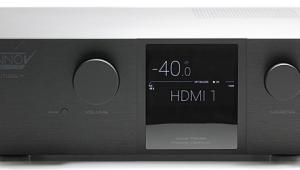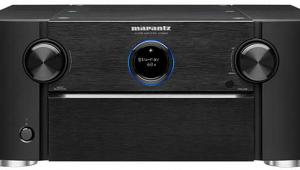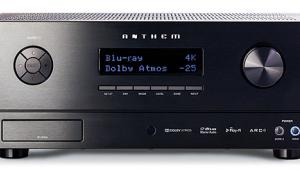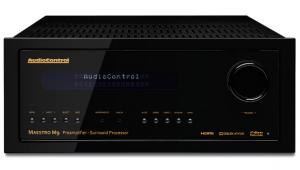Hi Kris, I find the colorspace issues very surprising given the Integra's ISF certification. You failed to mention that performing your fix, by turning off the VP while correcting the colorspace issue takes away any of the scaling, deinterlacing etc. ISF modes no longer work. So what is the point of having the VP if you have to turn it off to correct the colorspace issue. In regards to the ISF certification, shouldn't color accuracy be one of the first things on their list when they certify a product?
Integra DHC-80.3 Surround Processor and DTA-70.1 Amplifier Specs
Integra DHC-80.3 Surround Processor
Audio Decoding:
Dolby: TrueHD, Digital, EX, Pro Logic
IIx/IIz, Volume
DTS: DTS-HD Master Audio, DTS, ES, 96/24, Neo:X
Audyssey: DSX, Dynamic Volume, Dynamic EQ, MultEQ XT32
Other: Native DSD
3D: Yes
THX Certification: Ultra2 Plus
Video Processing: Marvell Qdeo 4K scaling, IDT HQV Vida processing
Auto Setup/Room EQ:
Audyssey MultEQ XT32
Dimensions (W x H x D, inches):
17.13 x 7.81 x 17.5
Weight (pounds): 29.8
Price: $2,600
Connections
Inputs: Video: HDMI 1.4a (8), component video (3), S-video (4), composite video (5)
Audio: Coaxial digital (3), optical digital (3), 7.1-channel analog (1), stereo analog (9), stereo XLR (1)
Outputs: Video: HDMI 1.4a (2), component video (2) S-video (2), composite video (2)
Audio: 9.2-channel XLR (1) stereo analog (1), 9.2-channel preamp (1)
Additional: RS-232 (1), 12-volt trigger (3), Ethernet (1), USB (2), IR input (2), IR output (1), AM/FM (1)
Integra DTA-70.1 Amplifier
Number of Channels: 9
Rated Power (watts per channel):
150 into 8 ohms, 2 channels driven
Specified Frequency Response:
5 Hz to 100 kHz (+1/–3 dB)
<
>
Dimensions (W x H x D, inches):
17.13 x 7.81 x 17.5
Weight (pounds): 50.7
Price: $1,800
Connections
Inputs: XLR (9), RCA (9)
Outputs: Five-way binding posts (9)
Additional: 12-volt trigger (1)
Company Info
Integra
(800) 225-1946
integrahometheater.com
- Log in or register to post comments



Having just bought the 80.2 I was wondering if there has been any changes more than in the video department in the newer 80.3.
As the 80.2 has the spec for HDMI 1.4a it too ought to be ready for 4k, and that was one reason I was all right buying the older model.
I also uses the "through" on video signals when they are 1080p as I see no benefit on messing with the signal in too many stages. And with the 4k displays seem to have a very good upscaling system (thinking about the Sharp displays) I have a hard time differentiating between the real useful upgrade of the 80.3 compared to the 80.2.
Thus my question if Integra like most other audio manufactures have the yearly "new model" disease ;)
Also the big difference between Onkey and Integra seems to be lower tolerance components. And that brings up an other query, has anybody checked for Counterfeit components, that seems to be a big problem in the electronic industry?
!!! For Bi-amping your fronts the rear channels are sacrificed, but why are we not given the choice of using the Front Hight or Front Wide as a replacement instead? Is it more than just reprogramming the firmware?
Worth mentioning is how sensitive the Audyssey mic is to vibrations. When I go to lengths to isolate the microphone (soft material instead of using the screw fitting) and dampen the stand there is a totally different measurement of the bas. My guess is that is one reason why Pro gets a better results, since the microphone is heavier and thus less prone to vibrate with the bas.
Ah, oh, and one reason I went with Integra was to use the XLR outputs, but now I am thinking that the unit is not using it in it's internal pathways and sets a transformer on the output. Guess I'll pull out my RCA and see if I can detect any sonic difference.
Thanks for the review!

Is Integra keeping to their annual release schedule?





























































